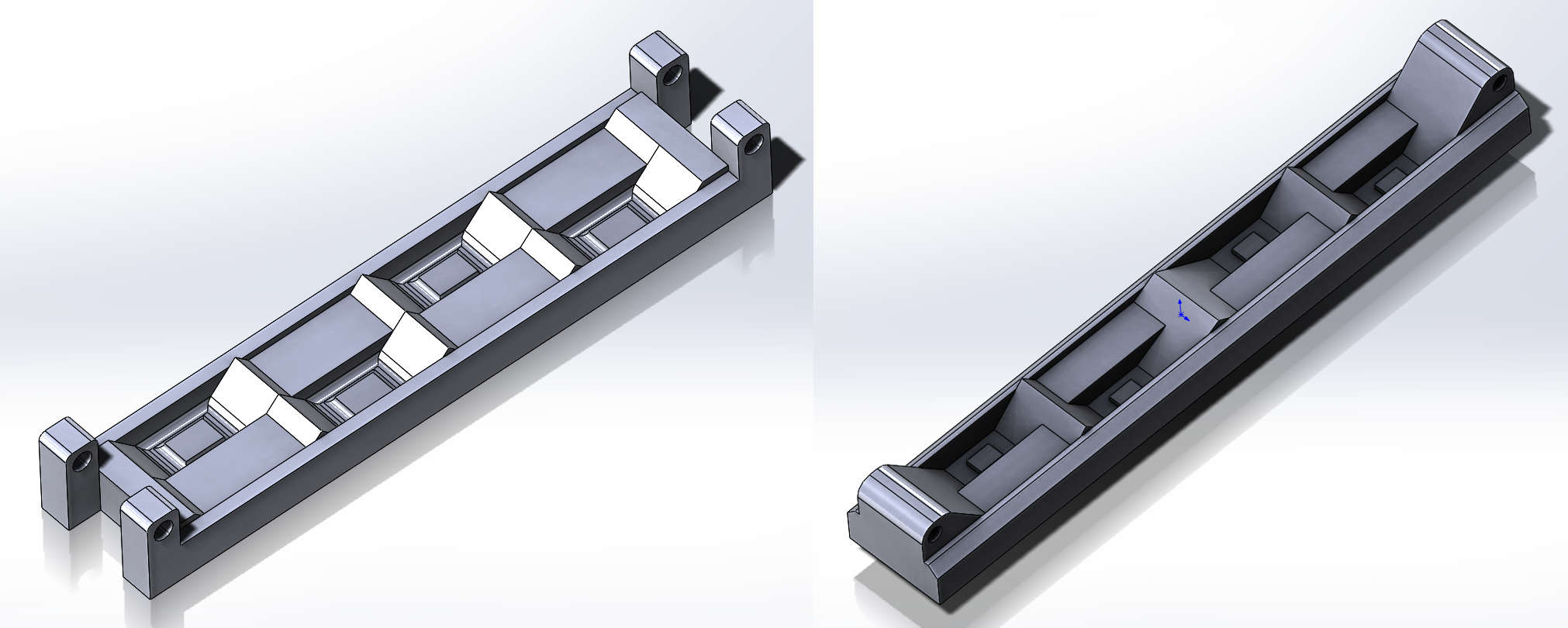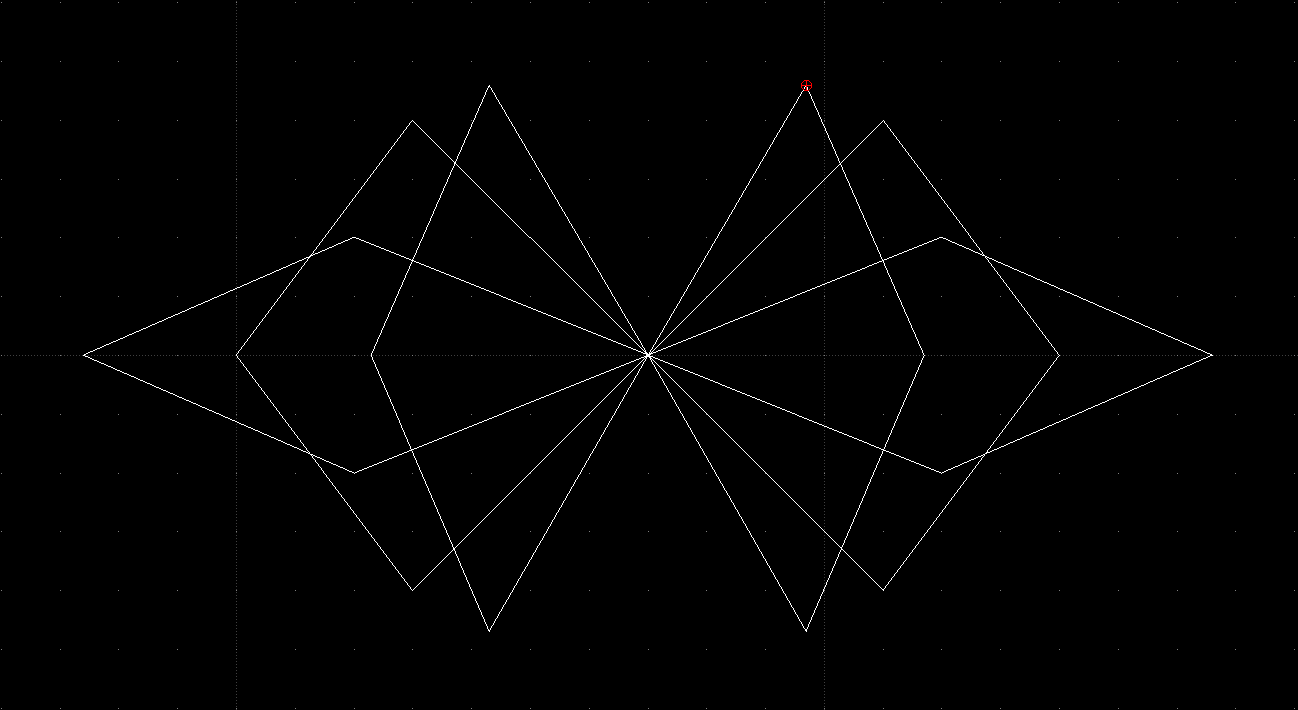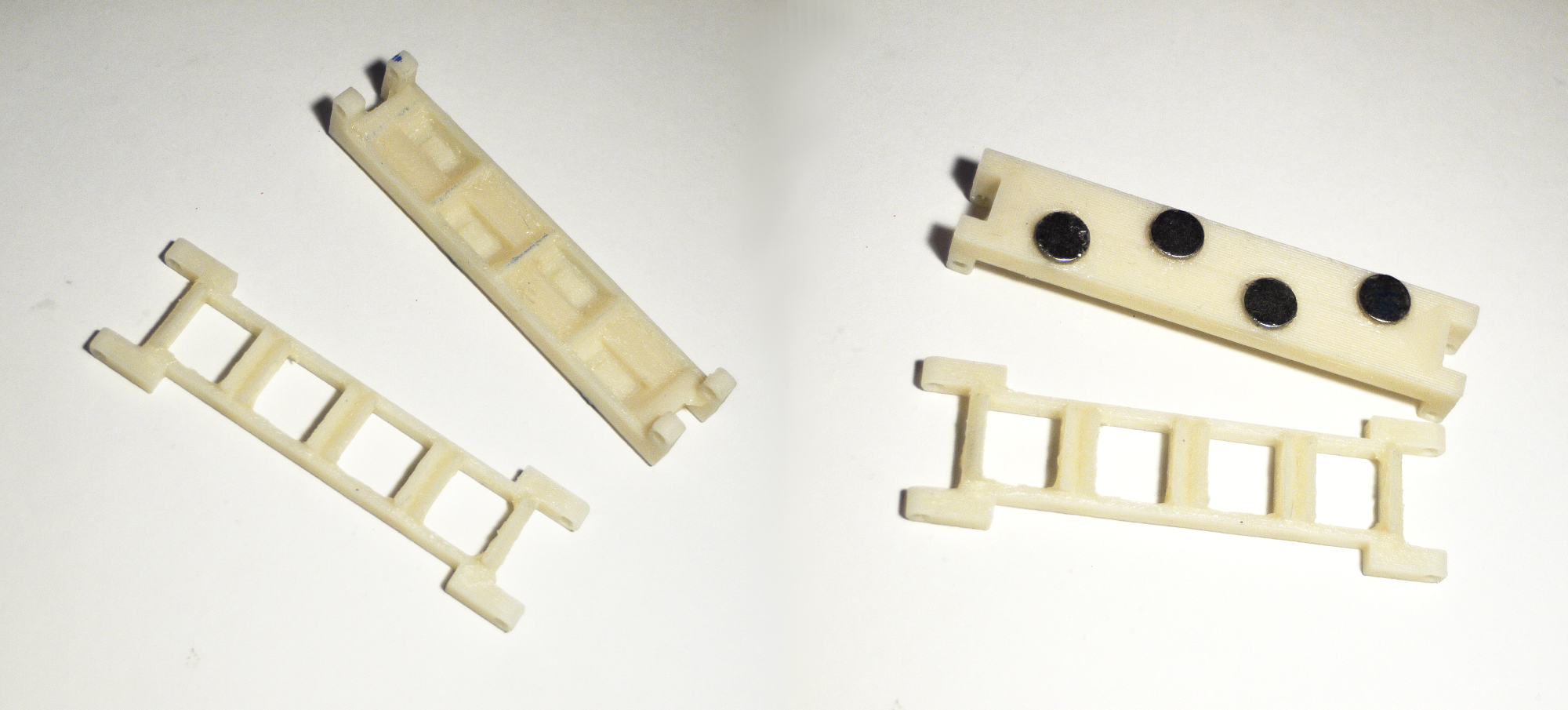Late update about what has been done today
New proportions
Previous test showed, what all structure works with help of chain reaction (except of pivoting torque and pulling force), since attraction of first elements (closest to magnets) in chain is bigger - they are main players at the start.
Also, contraction rate is very important, as elements aren't completely flat - their shape (for central elements of an actuator) defines, how much it can be contracted.
That's why I decided to differ lengths of elements, making smaller angles. As you can see, on previous version there were 45 degrees on side of each element:

 On the right side we have new version of mold with modified central parts, they would give us additional 30 degrees of freedom at least! Also, this version has few minor changes to improve flexibility with preservation of rigidity, hopefully.
On the right side we have new version of mold with modified central parts, they would give us additional 30 degrees of freedom at least! Also, this version has few minor changes to improve flexibility with preservation of rigidity, hopefully.

With new proportions, behavior changed a little, so elements closest to the magnet are being folded faster than central - that corresponds to chain reaction principle, it would be interesting to see, how it affects overall dynamics.
Now it's being 3d printed, it would be possible to do something with it on Monday.
At the end - photo of a previous version.
 Magnets glued to the bottom to arrange magnets properly inside of epoxy.
Magnets glued to the bottom to arrange magnets properly inside of epoxy.  CapitanVeshdoki
CapitanVeshdoki
Discussions
Become a Hackaday.io Member
Create an account to leave a comment. Already have an account? Log In.